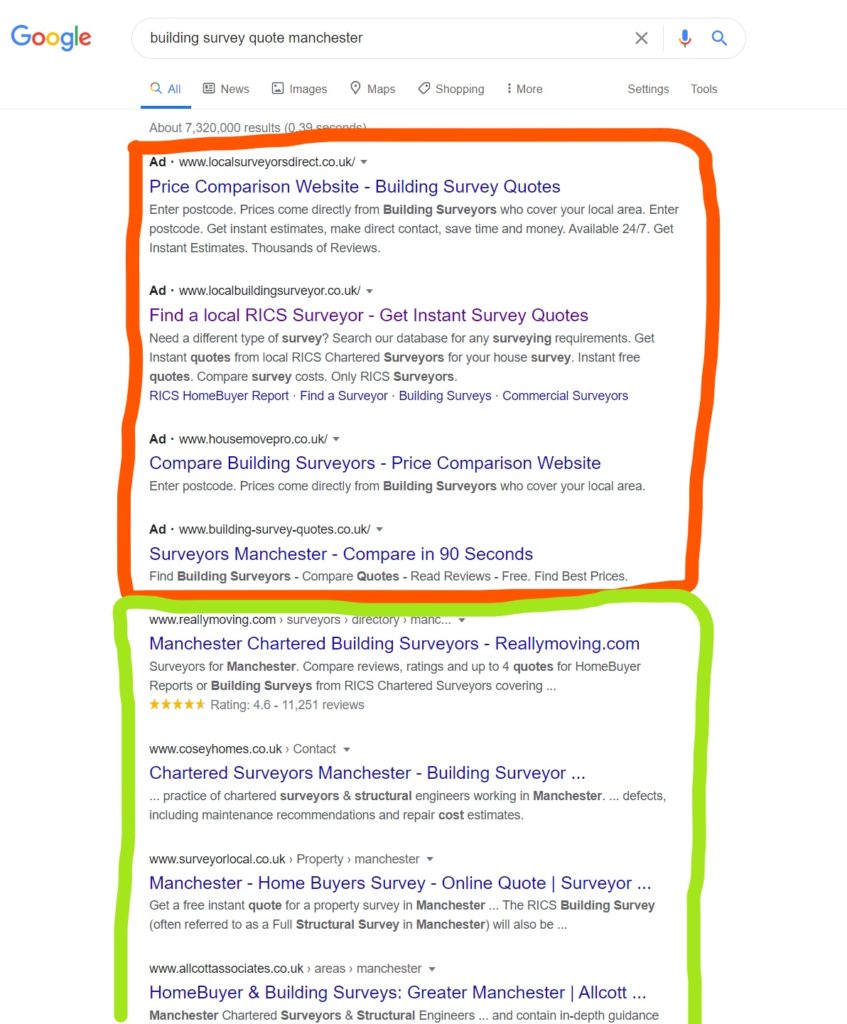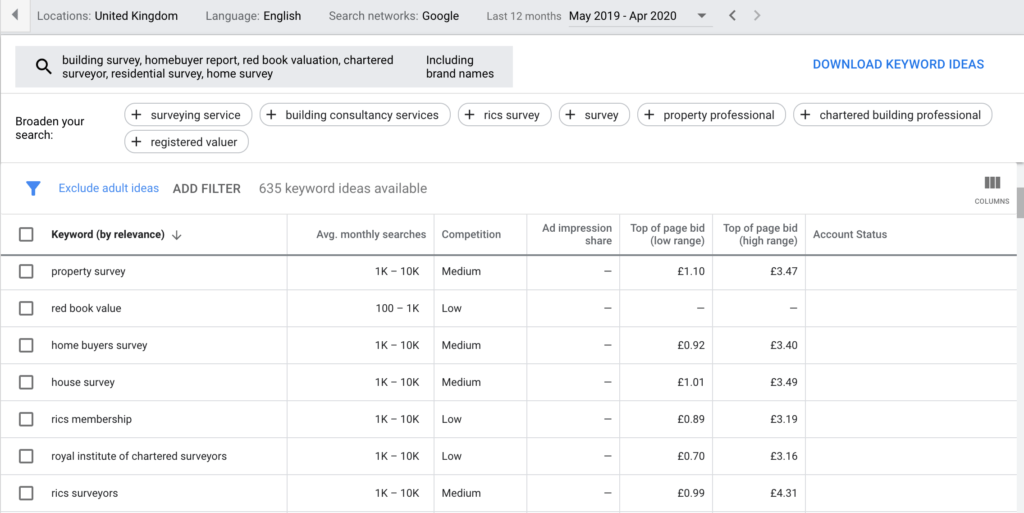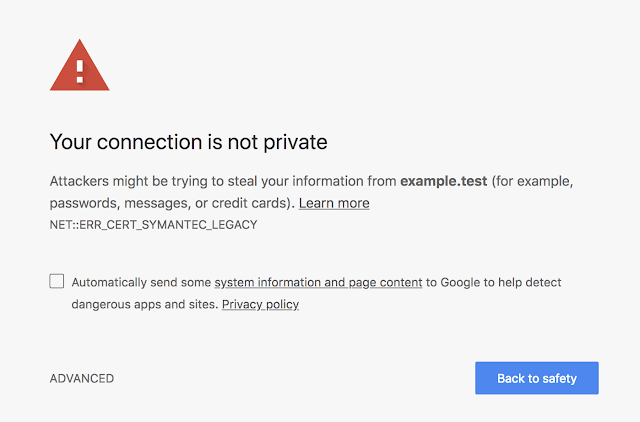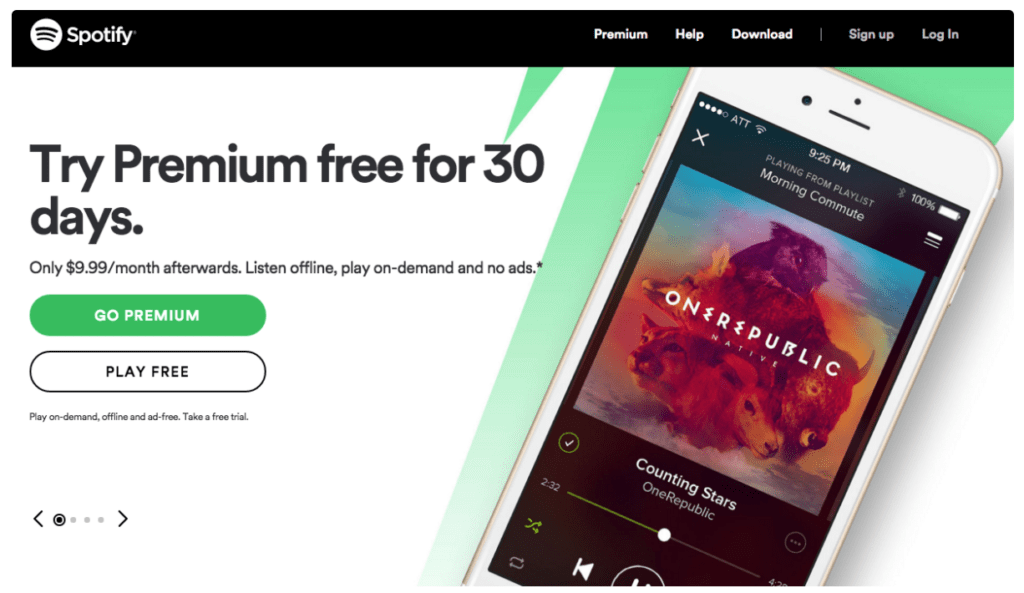Your website can be a valuable source of leads if set up correctly. There are two ways to optimise your website.
- Search engine optimisation – ensuring search engines can recognise your site is relevant to customer searches so that it is placed higher in search results.
- Structuring and designing your website so it is easy for your visitors to navigate, find information and make an enquiry.
This results in:
- More traffic to your website
- A higher conversion rate of web traffic to enquiries
Which method should you start with? Web design and structure updates can have an immediate impact on your conversion rates. If your web traffic is more engaged with your website and understands the content on your site you’ll receive more enquiries. SEO, however, takes time to take effect. Search engine ‘bots’ that crawl the internet do so approximately once a month (unless they know your website receives lots of visits and is regularly updated). The suggestions we’ll outline below are important but you need to be patient – these won\’t provide you instant results. It is a long-term gain but that will have long-term benefits on your website traffic.
In the short-term you can pay to appear at the very top of Google in the paid ads section. However, stop spending and you stop appearing. With SEO, as you work your way to the top, you will remain at the top of the organic listings for a long time.
Search Engine Optimisation (SEO)
SEO is the practice of increasing the quantity and quality of traffic to your website through organic search engine results. There are two sections to search results – the paid section at the very top and then the organic section. SEO is a practice that can be hugely competitive in some industries making it hard to appear top of organic search listings. However, between smaller surveying firms there seems to be much less of a focus on SEO. This opens up an opportunity for those that do put some focus here.

Why is it so important? 75% of people will never scroll past the first page on a Google search. If you are appearing for customer searches on pages 2, 3 or 4 you are missing out on traffic. According to SearchEngineWatch.com, websites that are on top grab 36.4% of the traffic which is missed by lower ranked websites. Bing, another search engine, reports that websites on the top get 42% of the traffic; the second gets 11% and third only gets 8%. So, it clearly indicates why your website needs to be on top of search results.
To find out how many keywords you rank for you can review your site on websites such as SEMRush (https://www.semrush.com/).
It is important you appear top for your company name. Anyone that knows about you and types your company name into a search engine wants to find your site easily. However, you need to remember that just because you appear top if you type your name in, that isn’t good enough. Most people when searching on Google aren’t typing your company name in. They are searching for generic terms because they don’t know you exist yet. They are looking to find a company that can help with what they need. 93% of online experiences begin with a search engine. https://www.searchenginejournal.com/seo-101/seo-statistics/
A customer types in a phrase like “Building Survey in Birmingham”. Search engines that have crawled your site will determine how relevant your site is to this customer search compared to all the others on the internet. Most relevant you’ll appear top. Less so, you’ll drop down.
Are you appearing low down for many search terms but know you are relevant? Let’s take a look at how you can help to move your website up the ranks.
Keyword Research
This is the most important thing to do before you start making any changes. Before you choose what wording to include on your website you need to choose which keyword text you will add. A keyword is the search term / phrase that a customer searches for on a search engine (e.g. Building Survey in London).
You can learn which keywords are popular using Google Keyword Planner (you’ll need to set up a Google Ad account but don’t worry you don’t need to create a live paid ad to use the planner).
You want to find out in your area what are the most searched keywords but that are also not competitive. High search volume / low competition keywords are great ones to include on your site.
Once you’ve found the right keywords, let’s look at where you should add them.

Meta tags
Meta data is defined as data that describes other data. Sounds vague! However, on a website this is two key parts of information:
- Meta title
- Meta description
It is these two bits of data that let a search engine know what each of your web pages are about. Each web page should have a ‘meta title’ and ‘meta description’ that contain keywords relevant to the page. Where are these used?

Your description should say something like: “We offer the RICS Homebuyer Report in Newcastle and surrounding area. Speak to the team about what our Homebuyer Report covers and for your free quote”
For example if you have a web page about Homebuyer Reports and you’re based in Newcastle and you’ve seen that many customers type in the phrase “Homebuyer Report in Newcastle” then you’d want your Meta title to say “Quality RICS Homebuyer Reports in Newcastle | Get Your Survey Quote | ABC Surveyors”
To edit this information on a WordPress site you can use a free plugin called Yoast https://yoast.com/wordpress/plugins/seo/. On other web builders such as Wix, there is an SEO section for each page. https://support.wix.com/en/article/adding-seo-page-titles-and-descriptions-meta-tags
Have a Page for Each Product or Service
A common mistake on a website is to have a homepage, a services page outlining everything you do (or a split of residential services and commercial services) and a contact page.
Imagine Google is looking for the web page that best answers the query “Help to Buy Valuation in Brighton”. A page giving some details about a help to buy valuation and home surveys and party wall services isn’t as clearly going to provide a good answer as a page specifically talking about Help to Buy valuations.
Therefore, the key is to set up a separate page for every single service you offer as well as general overview pages comparing different survey types. This allows you to offer a good level of detail about each service as well as linking between pages on your site (internal and external links on your site are good for SEO as it shows you offer supporting content).
A page should be at least 300 words long. On that page you should ideally mention your chosen keyword around 6+ times. This helps to reaffirm that the page is heavily about that topic. But it must read well – Google and your potential customers will know if it’s purposefully just keyword heavy.
Beyond benefit to Google understanding your pages, there is a benefit to the customer. A single page listing all your services and a description requires scrolling to the right section and a limited level of detail. That doesn’t help your customer answer their query. They end up going elsewhere for a better answer. If, however, you offer a detailed page per service they can understand everything from what the survey covers to what makes your service better value for them than the other surveyors covering your area. You get to show off more information.
Blog Pages
Not another blog! We aren’t suggesting you need to become a YouTube influencer. But once you’ve sorted the above points on your website you don’t want to rest on your laurels. Putting up regular blog posts shows Google you are keeping your site up to date and relevant. It also offers the opportunity to entice traffic to your site for topics they are concerned about. For example, if you wrote a post about common issues with damp in houses in Cornwall, you can get traffic from people learning about this issue. They may end up also looking up your surveying services after reaching this page as they want to understand if the damp they saw on their viewing was something to worry about or not. To see which topics customers are Googling you can type in ideas into Google Keyword Planner.
There will also be common issues that you find on properties you survey or common questions that you get asked by potential customers. A blog post is a great way to put out content that answers concerns that customers will have and shows off your expertise in this area. This helps provide further confidence to customers that are considering whether to use you or someone else. A blog post doesn’t need to take forever to write and can be a great way to reflect on how much you forgot you’ve learnt about a topic.
Web Structure and Design
You’ve done the work to get traffic to your site. Now you need to get that traffic to do want you want… enquire about your services. Remember you’ll never get a 100% conversion rate of visitors to enquiries. This is because some site visits will be family and friends, some will be search engine crawler bots and some customers will just decide you aren’t right for them. You can’t provide the perfect service for every customer – no business can win the whole market.
Here’s what you can do to keep customers on your site longer and learning about your services.
Fast Loading
To make sure I get to your homepage, (or any other landing page – simply the first page I land on after clicking the search result), the page must load in under 3 seconds. Any longer and customers start clicking back to search results. We are impatient. To ensure your pages are fast to load there are a few things you can do:
- Reduce image sizes: images that are a few MB increase the time to load the page. You can resize images to below 200kb without losing screen quality.
- Lazy loading: you can set up your site to initially load only visible content and then load the rest of the page as your scroll. This saves the whole page having to load in one go speeding up loading times.
- Plugins: there are speed plugins for websites that help ‘minify’ your sites code meaning it the internet browser only has to load what is needed
Check out the current speed of your website and get free tips on how to speed it up here: https://gtmetrix.com/
Great Homepage
Your homepage has to be clear straight away. If I’m looking for residential surveys but your whole homepage seems geared at commercial surveys I’m going to leave quite quickly. It needs to be clear you service both property types and where to go next to get more information.

Modern and Secure
A very important factor is that a website looks modern and secure. If it doesn’t look modern it is like having a dated shopfront on the high street with peeling paint. It suggests business isn’t doing so well. A website that isn’t secure also discourages customers from filling in any forms through fear that their data could be intercepted.
It is important that you have an active SSL certificate installed (Secure Sockets Layer). This is the padlock next to your website name in the browser and shows your site running on https:// instead of http:// – the s stands for secure.
Not only does it provide consumer confidence but browsers can load warnings about your site before a customer even reaches it if it detects that your site has submission forms etc.
Navigation
I’ve reached your website. What action do you want me to take next? If you want me to take a look at either your residential or commercial services you need to provide a way of navigating straight from the homepage header (the first section that is visible when the page loads).
You should also have a clear menu that shows me how to get to every useful page. For example having links to pages or dropdowns such as Home Surveys with a list of each survey type you offer so I can easily get straight where I want.
Customers don’t want to work hard to find what they need. Make it clear or you risk losing traffic back to Google search results.
On each page there should also be a clear structure. For example breakdown your Homebuyer Report page into what, why, when, who, how. What the report is, why they should get it, when is the best time to get it, who to use i.e. why you, and how to get a quote and how the process works.
Sections make pages easier to read than just a solid block of text.
Clear Call to Actions (CTAs)
Once your customer has read a page about the survey they require, what do you want them to do next? Presumably you want them to enquire. How to enquire needs to be obvious and enticing. Requiring the customer to decide to navigate to your menu and find the contact page is expecting the customer to be proactive and assumes you have really sold them on using your service.
Having clear call to action buttons throughout the page is crucial to encourage customers to make the effort of enquiring. Remove the thought process of what step to take next by providing clear guidance.
This is a great example because the call to action buttons steer you towards a premium subscription. But either way it is clear how to sign up to Spotify.

Quote forms not contact forms
When your customer takes an action what is it you want them to do? Asking the customer to call or email you from your contact page is a weak call to action. We want instant gratification with minimum effort. Out of hours and this option is less enticing. In office hours most customers will follow the route of least resistance.
A quote form is a great way to capture more customer enquiries that you can follow up with as soon as you are free. It is important that you respond to enquiries as soon as possible. Find out why in our blog post on how to convert more leads. A quote form entices customers to make an enquiry for the reward of receiving a quote now. You may choose instead to provide manual quotes. If your quote form clearly makes an effort to provide a quote rather than just capture details then customers are more likely to fill it in. Especially if they can revisit it once you submit your quote to review your fees.
Contact forms disguised as quote forms can be frustrating. If the customer feels like they’ve filled in a form suggesting a quote will be quickly provided but it was the same as just filling a contact form in on the contact page it can leave a bad taste. It is better to be up front that you are asking the customer to submit information for a quote review.
Your Survey Booker account can provide you with a quote form to capture customer enquiries. Manage online traffic, phone bookings and more and provide instant quotes, estimates or bespoke quotes.
Summary
Search engine optimisation and setting up pages for each service you offer focused around keywords your customers are searching will offer you more traffic over time. This is a long-term strategy that will continue to provide benefits without an ongoing spend.
Reviewing your website structure, content and call to actions will ensure you convert as much traffic as possible. Installing software such as Hotjar (https://www.hotjar.com/) allows you to see what actions customers take when they reach your site through screen recordings. You can also watch how friends and family navigate your site without prompts to see where people might be getting stuck or confused and make adjustments.
Your website can be a great source of leads and sales if you put time into it. If however, you do nothing with it your website is like opening a store on a side street on the outskirts of town… it just won’t be seen. Move your website to the centre of town now.
